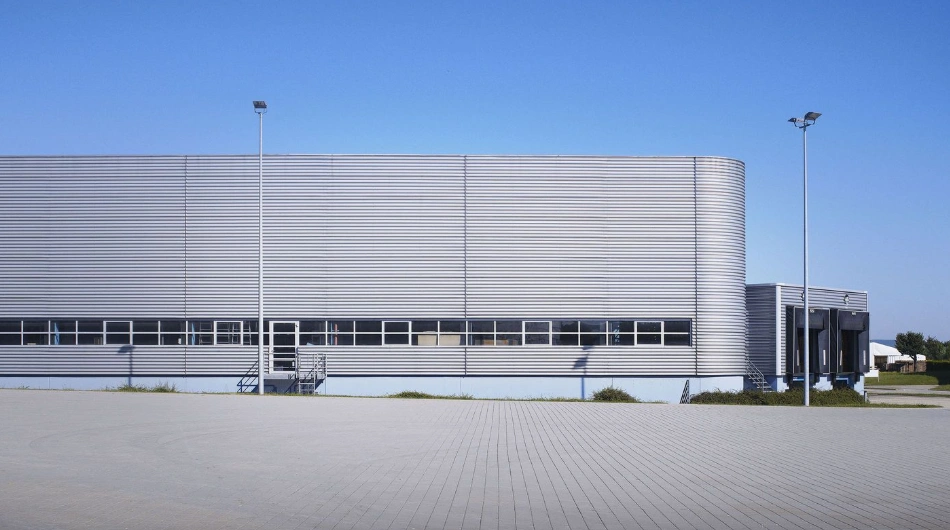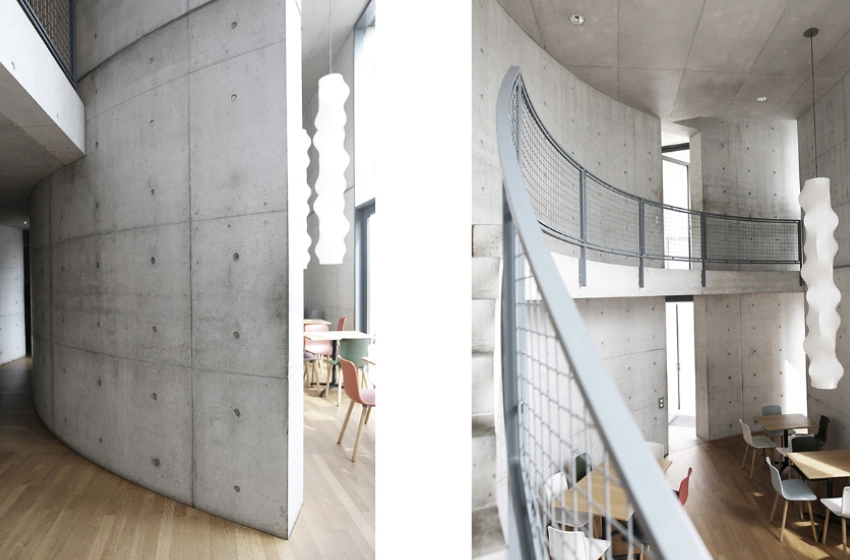Creating corporate environments that prioritize well-being and combat digital burnout is essential in today’s scenario. To achieve this goal, it is necessary to deeply understand people’s needs and the demands of the work environment.
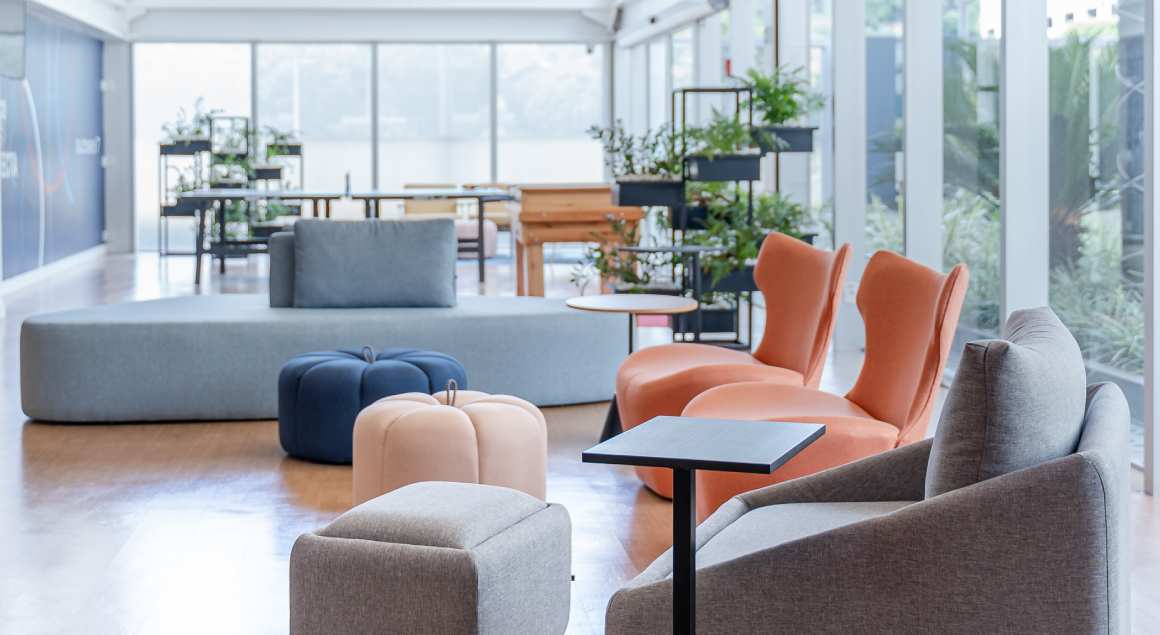
1. Analysis of the context and needs in the corporate environment
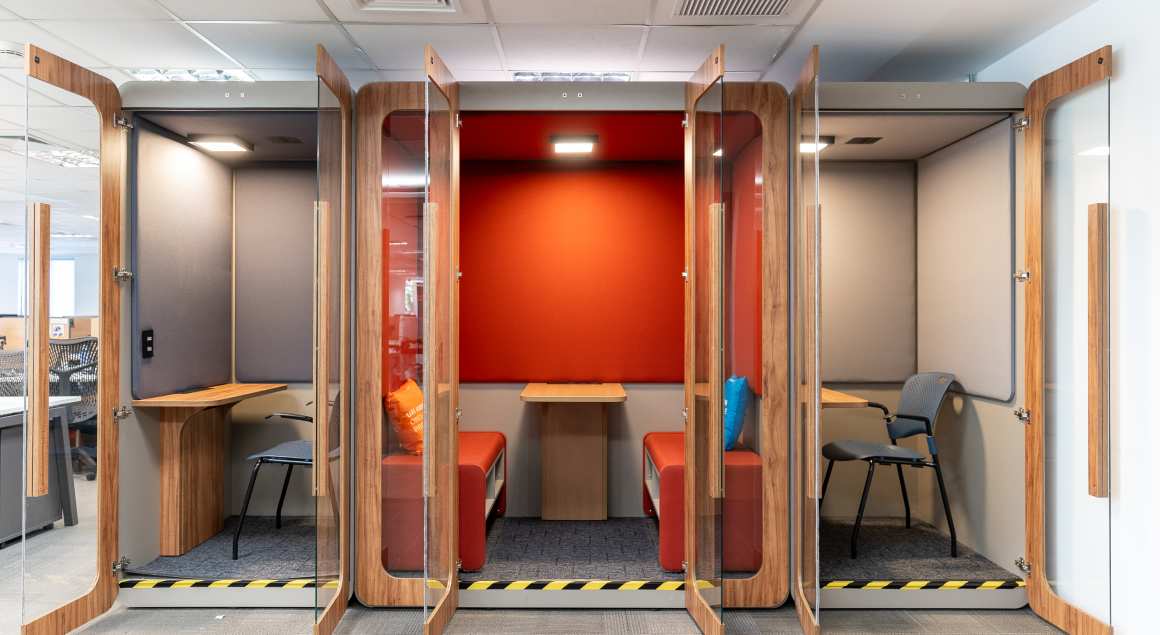
To create a corporate environment that meets functional demands and promotes employee well-being, a detailed analysis of the context and specific needs within the office project is essential. This includes:
Understanding corporate requirements:
⦁ ⦁ Identifying the client’s needs.
⦁ ⦁ Conducting initial meetings with the client and stakeholders to capture expectations.
⦁ ⦁ Assessing work dynamics, activity flow, and interactions between teams.
⦁ Identifying challenges in the digital environment:
⦁ Recognition of the main challenges related to digital burnout.
⦁ Data collection on employees’ digital routines, including the number of virtual meetings, screen time, and information load.
⦁ Identification of areas where technology use can be optimized.
2. Design for disconnection
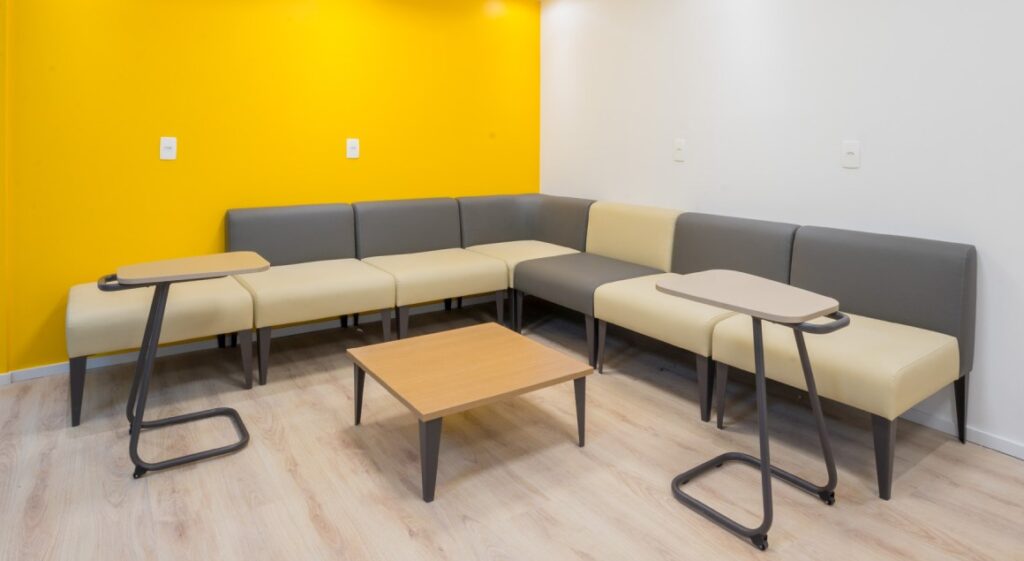
To promote mental health and rest within the corporate environment, office interior design should include:
Disconnection areas:
⦁ Quiet zones and relaxation spaces to keep employees away from screens and devices.
⦁ Use of biophilic materials and design to encourage recovery and well-being
Integration of flexibility and work-life balance

With the rise of hybrid work models, the design of the corporate environment must be adaptable:
Adaptive design for hybrid models:
⦁ Creation of flexible areas, such as hot desks and multifunctional rooms.
⦁ Inclusion of collaborative spaces and private areas for tasks that require greater concentration.
Work-Life Blend Management:
⦁ Definition of specific areas for professional and personal activities, avoiding overlap.
⦁ Ensure that ergonomics and interior design for offices do not encourage unnecessary extension of work beyond scheduled hours.
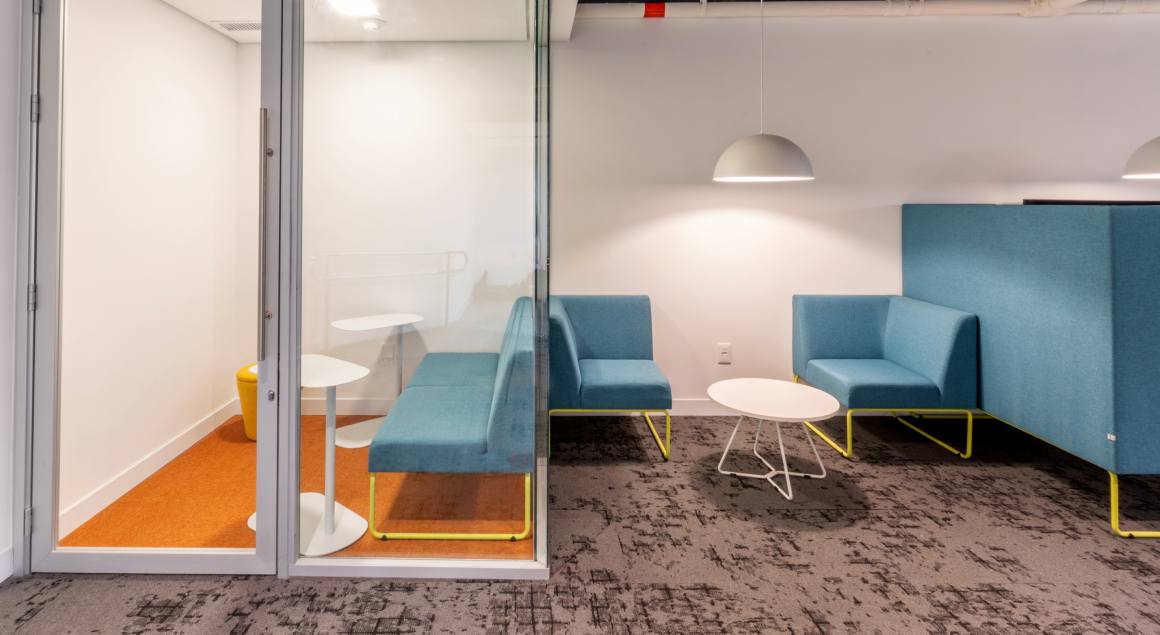
4. Digital break planning
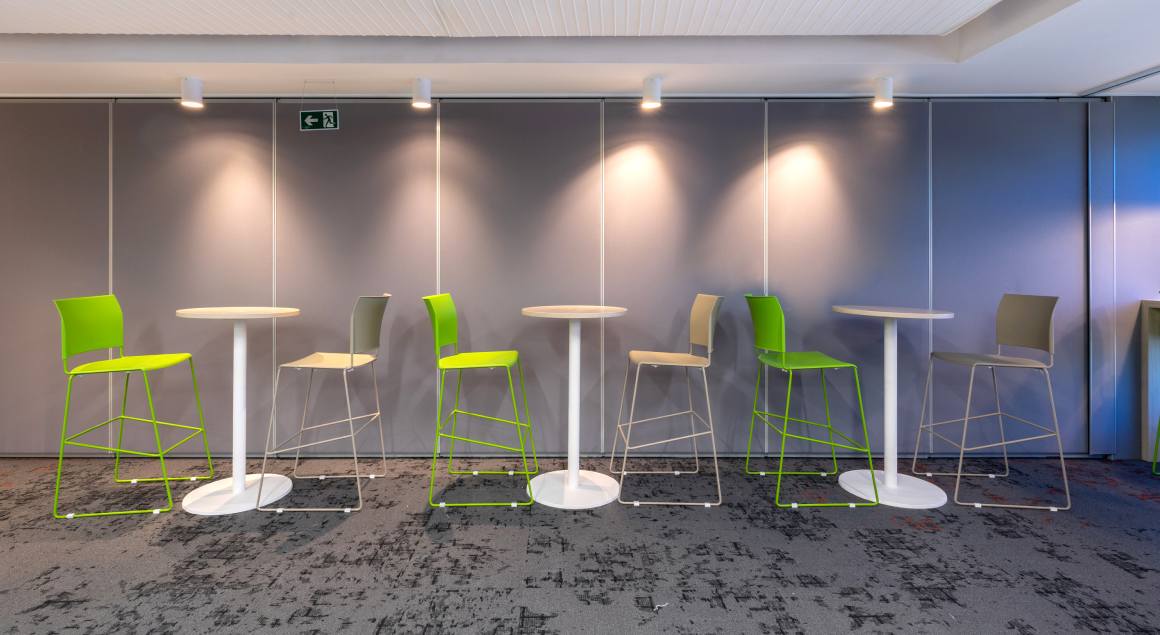
Encouraging regular breaks is crucial to minimizing digital burnout in the context of office projects:
Incorporating Intentional Pauses:
⦁ Creating spaces that invite disconnection, such as social areas without access to technology.
⦁ Integrating furniture that facilitates alternating between work and rest, such as relaxing chairs and informal lounges.
5. Digital training and better use of technologies
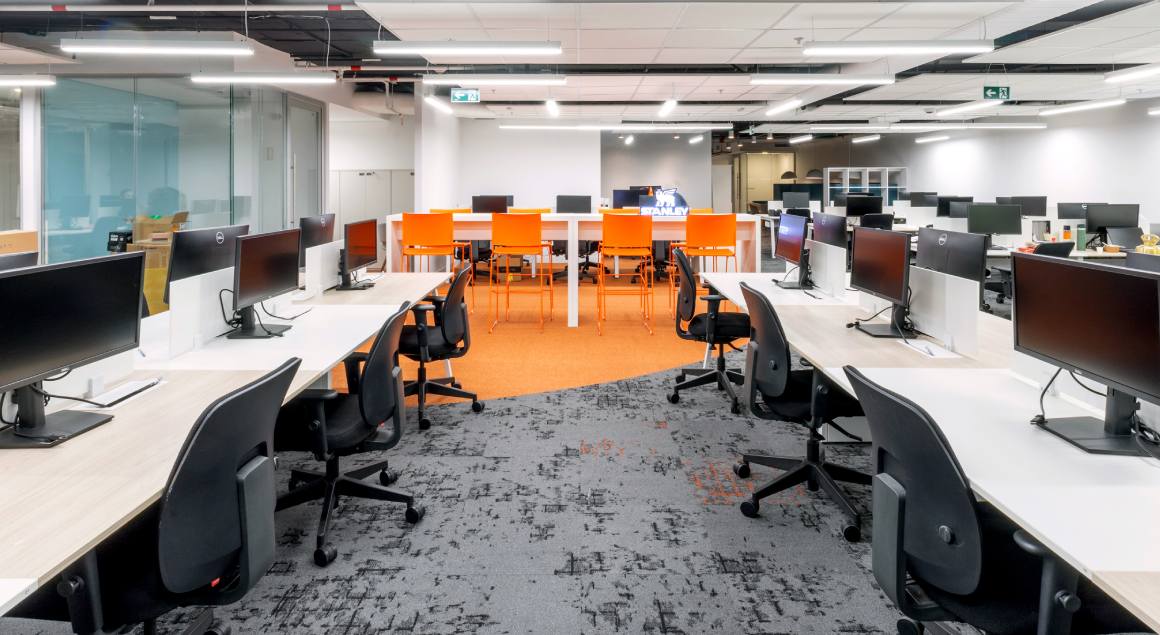
The office architecture environment must support ongoing training and efficient use of technology:
Spaces for training and development:
⦁ Creation of training rooms and technology hubs.
⦁ Incorporation of intuitive and easy-to-use displays and equipment.
6. Defining expectations and structuring work
Organizing the environment to facilitate clarity of tasks and the definition of priorities is essential in office design:
Spaces that facilitate productivity:
⦁ Segmentation of high productivity, collaborative, and rest areas.
⦁ Use of signs, colors, and smart dividers to demarcate specific zones.
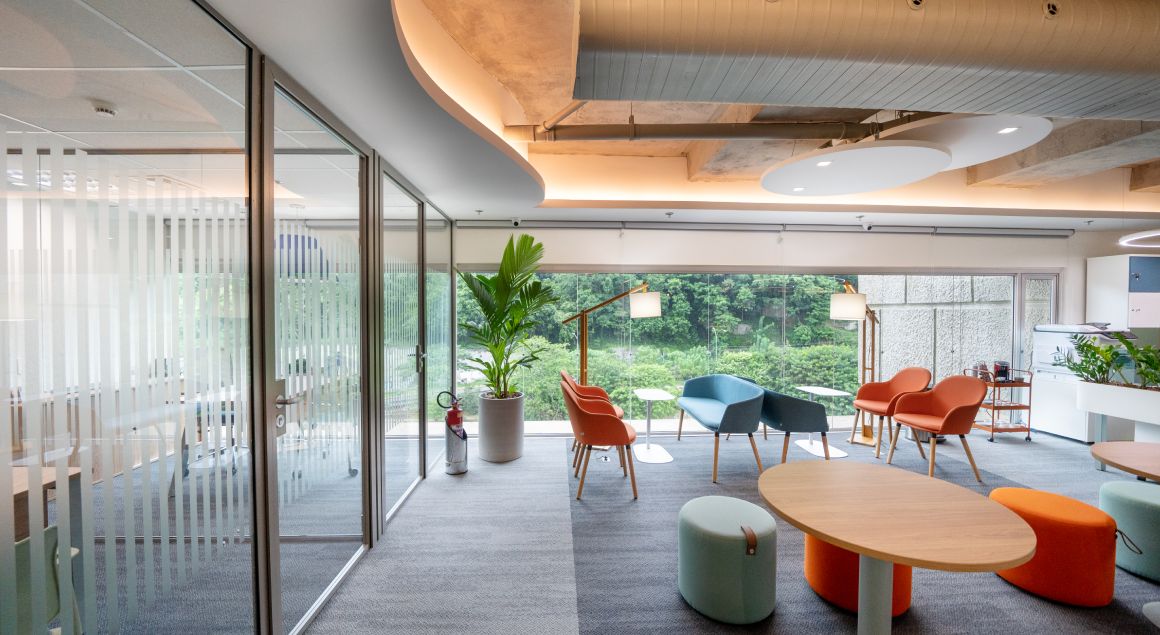
7. Supporting physical and mental health through ergonomic design
Ergonomics should be integrated into office interior designs to promote employee health:
Ergonomics integrated into the design:
⦁ Adoption of adjustable furniture, such as height-adjustable tables and ergonomic chairs.
⦁ Development of movement areas, encouraging active breaks, and preventing injuries.
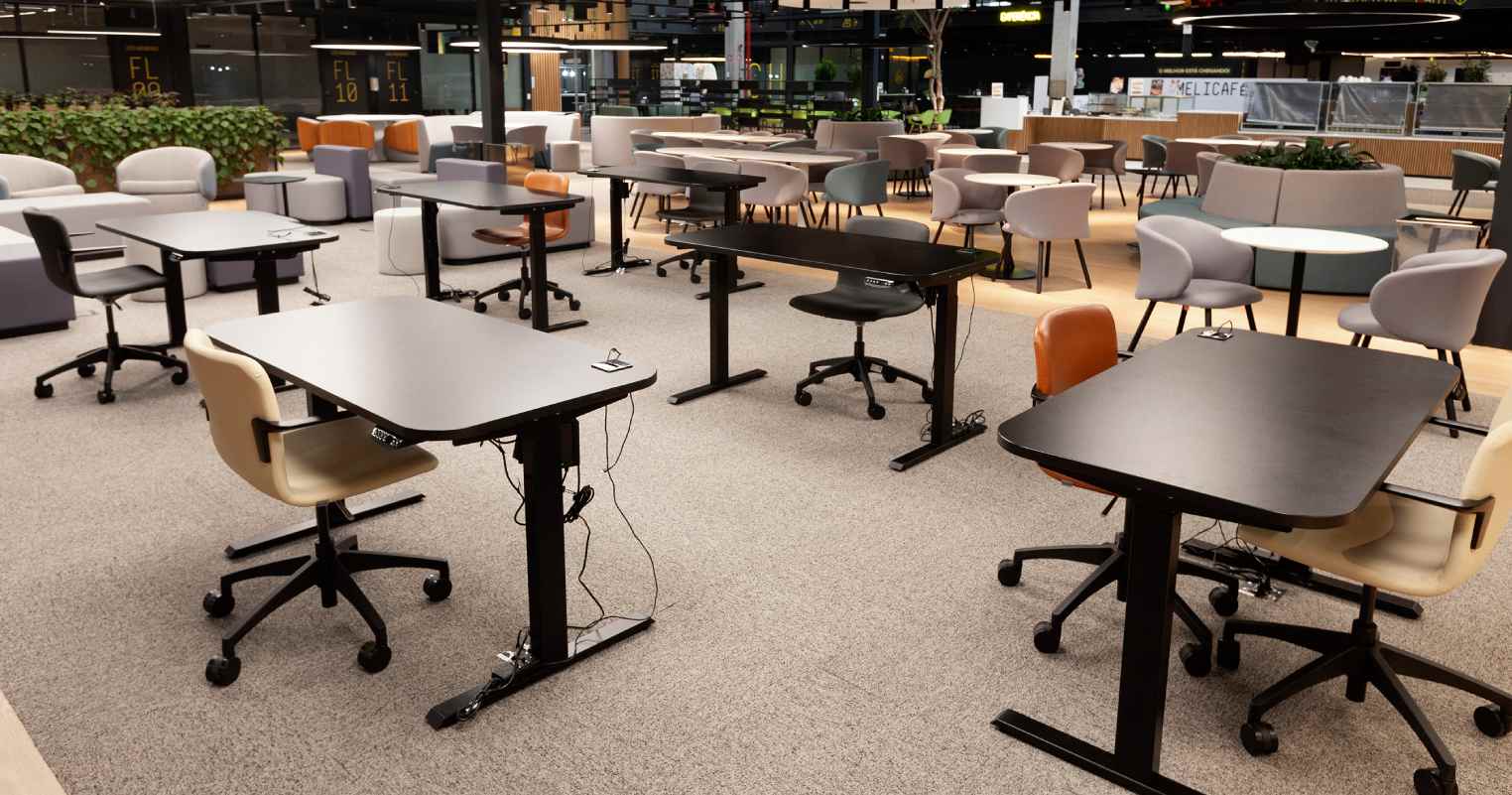
These preliminary concepts highlight the importance of creating corporate environments that respond to the challenges of digital burnout while prioritizing employee well-being.
By implementing these guidelines, architects, and designers can create spaces that not only meet the technological demands of the digital age but also promote a healthy balance between productivity and mental health.
Throughout the development of projects, the focus will be on ensuring that every aspect of the design contributes to a sustainable, adaptable, and human-centered workplace.
Digital fatigue is a real challenge in the modern world of work, but it is not inevitable. By implementing targeted measures, companies and individuals can help create a healthy work environment in which the benefits of digitalization can be reaped without compromising health and well-being.
It’s time to focus on the people behind the screens and ensure they have the tools and support they need to work successfully and healthily in the digital age.
The Pett Capellato Solutions Hub can offer a huge range of services and products so that your project, in addition to being a success in design and creativity, meets the concepts of healthy work and well-being for people.
See more at www.pettcapellato.com.br.

